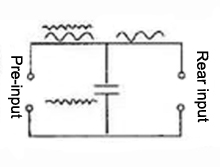In electronic equipment, the alternating current output from a device often has high-frequency components and low-frequency components. At this time, the high frequency bypass capacitor can filter high frequency (let the high frequency pass through the branch where the high frequency bypass capacitor is located) and retain the low frequency (low frequency output). The capacitor that plays this role is called the high frequency Bypass capacitor.
The capacitor that passes high frequency and blocks low frequency has small capacitive reactance to high frequency components, and large capacitive reactance to low frequency components. High frequency components pass through the capacitor, and low frequency components are transmitted to the next stage. Capacitors used for this purpose are called high-frequency bypass capacitors, and the capacitance of high-frequency bypass capacitors is generally relatively small.
To understand inductance or capacitance, the unit in its calculation formula is the ohm. That is to say, for the circuits they can function, their function can be regarded as resistance. As shown in the figure, the output of the previous stage outputs various electrical components (including low frequency and high frequency) as the beginning, and the input of the later stage ends (including low frequency only). We know that the capacitive reactance of a capacitor is related to frequency. The higher the frequency, the lower the capacitive reactance, which is equivalent to a small resistance. So for high-frequency current, the capacitive reactance of the capacitor in the figure is very small, which is equivalent to a branch with very small resistance, so the high-frequency current is short-circuited here and cannot reach the subsequent stage input. On the contrary, for low frequency current, the capacitance of the capacitor in the figure is large, so it will not be short-circuited, and it can reach the output of the subsequent stage.





